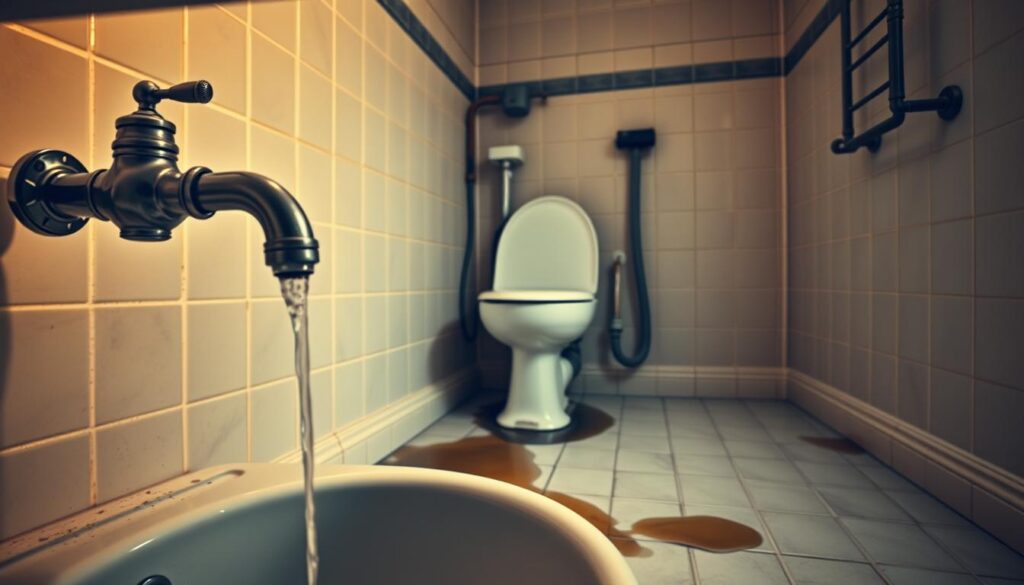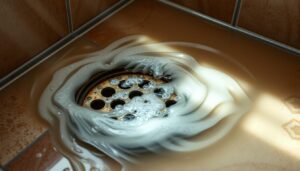Are you tired of weak water flow from your taps? It’s a frustrating problem that can disrupt your daily routine. In the UK, many homeowners face issues with plumbing that lead to reduced pressure in their homes.
Understanding the causes of this issue is the first step towards resolving it. Whether it’s a simple fix or a more complex problem with your home’s plumbing system, this guide will provide you with practical advice and help you restore proper water pressure.
Key Takeaways
- Identify common causes of low water pressure in UK homes.
- Learn DIY troubleshooting methods to resolve the issue.
- Understand when to call a professional plumber for assistance.
- Discover how your home’s plumbing system interacts with the wider water network.
- Get tailored advice for resolving pressure issues in your home.
Understanding Low Water Pressure in UK Homes
Understanding the concept of water pressure is crucial for UK homeowners. Water pressure refers to the force that pushes water through your home’s pipework, determining the strength of the flow from your taps and appliances.
Common Signs of Low Water Pressure
You may be experiencing low water pressure if you notice weak streams from your taps, longer filling times for baths and appliances, or inconsistent water flow. These signs indicate that the water pressure in your home is not meeting your needs.
How Water Pressure Works in Residential Plumbing
Water pressure is measured as the force that pushes water through your home’s pipework. In residential plumbing systems, water pressure typically ranges between 1 and 3 bar, with UK water companies aiming to provide a minimum flow rate of 9 litres per minute at your property boundary.
Why Water Companies Manage Pressure Levels
Water companies actively manage pressure levels throughout the day to prevent leaks, save water, ensure constant supply, and reduce bills. They adjust the strength of water flow so there’s enough for everyday needs, but not so much that it causes bursts and leaks.
Some key reasons why water companies manage pressure levels include:
- Preventing leaks and bursts in the wider water network
- Conserving water resources
- Reducing the risk of supply interruptions
- Ensuring a minimum flow rate at your property boundary
By understanding how water pressure works and why it’s managed, you can better diagnose issues with your home’s water supply.
Common Causes of Low Water Pressure
Several factors contribute to low water pressure in UK homes, ranging from external influences to internal plumbing issues. Understanding these causes is essential to addressing the problem effectively.
External Factors Beyond Your Control
External factors can significantly impact water pressure. For instance, planned works by water companies can temporarily reduce pressure in your area. Burst water mains or emergency repairs in your neighbourhood can also cause sudden drops in pressure or complete loss of water supply.
Internal Plumbing Issues
Internal plumbing issues are another common cause. Limescale buildup in pipes, particularly in hard water areas, can narrow the internal diameter of pipes and restrict flow over time. Older properties often have narrower pipes that cannot deliver the same volume of water as modern plumbing systems.
Seasonal and Time-of-Day Variations
Seasonal factors and time-of-day variations also play a role. Peak usage times, typically 7-9 am and 6-8 pm, create higher demand across the network, resulting in naturally lower pressure during these periods.
| Cause | Description | Impact on Pressure |
|---|---|---|
| Planned Works | Water company maintenance | Temporary reduction |
| Burst Water Mains | Emergency repairs | Sudden drop or loss |
| Limescale Buildup | Narrowing of pipes | Gradual reduction |
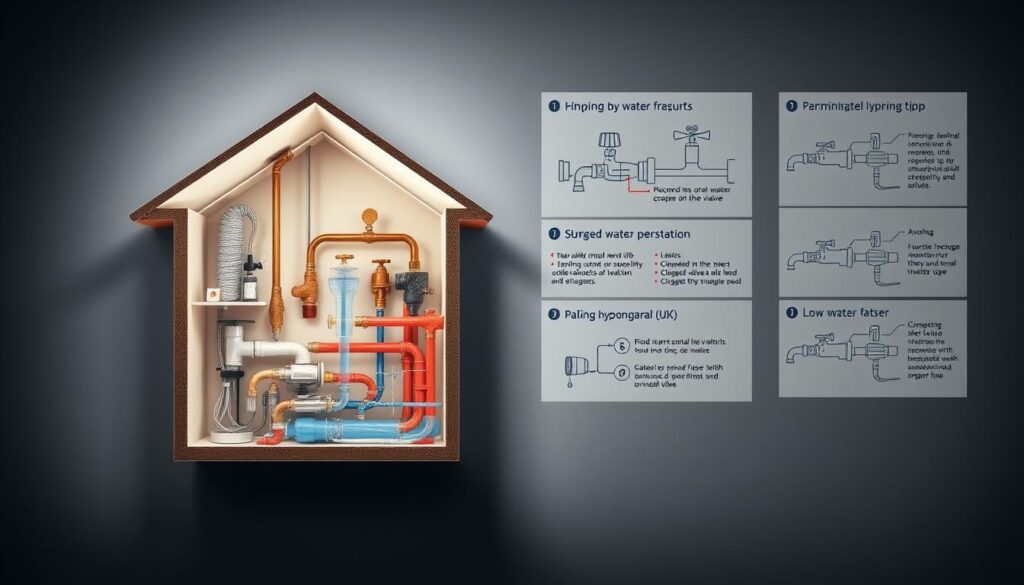
DIY Troubleshooting for Low Water Pressure
To tackle low water pressure, start by checking a few key areas around your home to identify the cause. This proactive approach can help you resolve the issue or determine if you need to call a professional plumber.
Check for Planned Works or Local Incidents
Before attempting any repairs, it’s essential to check if there are any planned works or reported incidents in your area that might be causing the low water pressure. You can do this by visiting your water company’s website or contacting their customer service. This simple check can save you time and effort.
Inspect and Adjust Your Stop Tap
Your internal stop tap controls the main water flow into your property. Ensure it’s fully open to maximize water pressure. To adjust it, turn the stop tap anti-clockwise until it stops, then back it off slightly to prevent seizing. This simple adjustment can improve water flow throughout your home.
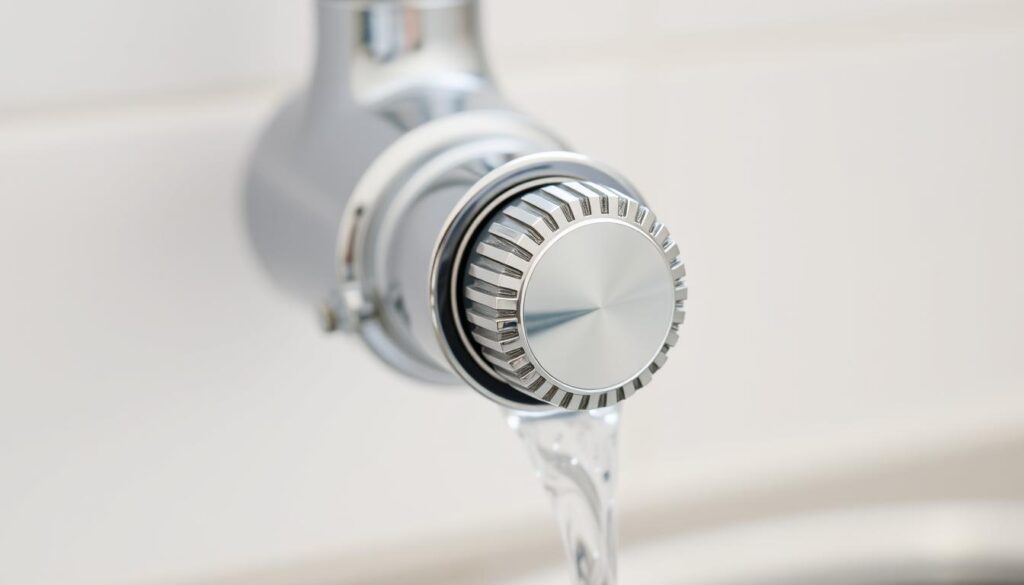
Clear Airlocks in Your Pipes
Airlocks occur when air becomes trapped in high points of your plumbing system, causing irregular water flow and sometimes vibrating pipes. To clear an airlock, turn on all taps starting with the one closest to the stop tap and let the water flow for 10-15 minutes to push air bubbles through the system.
Test Your Water Flow Rate
Testing your flow rate provides objective data about your water pressure. Use a measuring jug to time how quickly it fills from your main kitchen tap. A 1-litre jug should fill in approximately 6-7 seconds for adequate pressure. If the flow rate is less than 9 litres per minute, you have a pressure issue that needs addressing.
| Flow Rate (litres/minute) | Time to Fill 1 Litre (seconds) | Pressure Status |
|---|---|---|
| 9 or more | 6.7 or less | Adequate |
| Less than 9 | More than 6.7 | Low Pressure |
When to Call a Professional Plumber
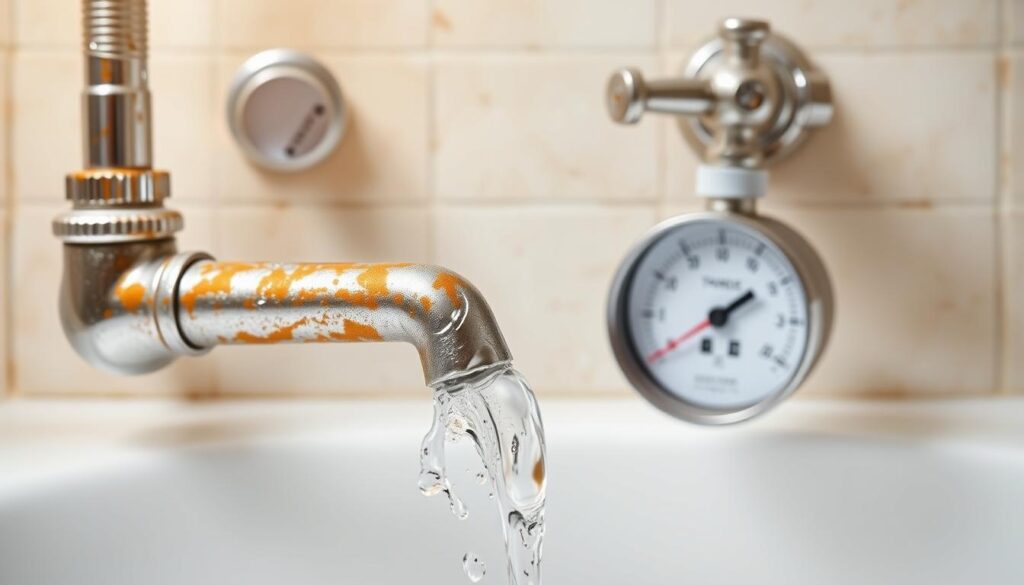
When low water pressure persists despite your best efforts to fix it, seeking professional help is the next logical step. If you’ve tried all DIY troubleshooting steps and still experience issues, especially if both hot and cold water systems are affected, it’s time to call a professional plumber.
Signs That Indicate Professional Help Is Needed
Sudden changes in water pressure, unusual noises in your plumbing system, or visible leaks are clear indicators that you need a qualified plumber. Variations in water pressure across different areas of your home or a gradual decline in pressure over time also suggest underlying issues that require expert diagnosis.
Finding a Qualified Plumber in the UK
To find a reliable plumber, check if they are registered with approved schemes like WaterSafe, ensuring they have the necessary qualifications and insurance to work on your water supply. Before hiring, verify if your home insurance covers plumbing and drainage, as this might cover certain repairs.
What to Expect During a Professional Assessment
During a professional assessment, the plumber will check your stop tap, inspect visible pipework, test flow rates, and possibly use specialized equipment to identify blockages. They will assess both the supply side and your home’s internal pipework to pinpoint where pressure is being lost, offering solutions like booster pumps or replacing narrowed pipework if necessary.
Conclusion: Maintaining Optimal Water Pressure
Effective management of water pressure can significantly enhance your home’s overall plumbing performance. To achieve this, regular maintenance is essential, including checking your stop tap every few months to ensure it moves freely.
You can also make adjustments to your usage patterns, such as running appliances during off-peak times when water pressure is typically higher. For more information on understanding water pressure in your home, you can visit our guide on understanding water pressure.
By being mindful of these factors and taking proactive steps, you can maintain optimal water pressure and enjoy a more efficient plumbing system.
